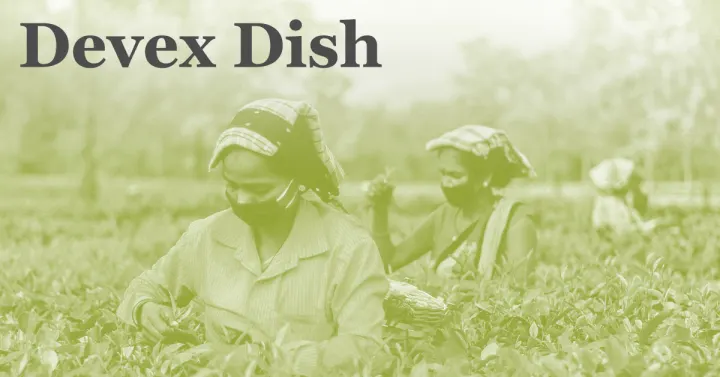Devex Dish: Why WFP is watching rice

Rice prices are up, and the World Food Programme is worried. At last month’s U.N. General Assembly, I sat down with WFP Chief Economist Arif Husain to discuss what he is watching when it comes to the global food crisis.
Husain tells me the world has consistently missed opportunities to reform the food system when its weaknesses are exposed — such as happened in 2008 when rising rice prices contributed heavily to food insecurity, particularly in West Africa. Because the world remains so dependent on so few countries for key staple exports, a crisis in one country or region — say, Russia and Ukraine — causes ripples everywhere else.
“Our tendency is that as soon as the problem goes away, we go back to our usual business,” Husain tells me of the typical cycle of crisis response.
He also cautioned against too much celebration that prices of staple crops such as wheat are declining. They might be down from their peak after the Russian invasion of Ukraine in February, he says, but they’re still at 10-year-high levels.
WFP chief economist: ‘We’re worried’ about rice prices (Pro)
+ With a Devex Pro membership, you can also read our funding analysis of WFP’s top suppliers in 2021 as well as access other exclusive data-driven analysis and funding insights. Get these perks and more by signing up to a 15-day free trial.
Up in smoke
Humanitarian access gains made in Tigray following a truce in the embattled region of Ethiopia have “evaporated” since fighting began again in August, according to Michael Dunford, regional director for eastern Africa at WFP. He says during the five months after the truce, WFP brought 240,000 metric tons of aid into the region on over 8,000 trucks. The agency also moved 2.5 million liters of fuel into the region for its and other humanitarian organizations’ operations.
Now WFP can’t move trucks or fuel into the region and all current food distributions are from food brought in before the renewed fighting. This comes as an estimated 89% of the population — 5.2 million people — have limited food capacity, with over 40% of them acutely food insecure.
Number munching
$50 billion
That’s the amount of global support needed to eradicate food insecurity, according to the International Monetary Fund. They’re also out with a stark warning that the global food price shock is at least as bad as the devastating crisis of 2007-08 — and could worsen. My colleague Shabtai Gold reports that 48 vulnerable countries are seeing their import bills climb by about $9 billion over the next two years.
To help, the IMF board on Friday approved a new emergency financing window that enables countries to borrow funds to support balance-of-payment issues arising from the shocks, both on the import and export sides. The new 12-month window will allow countries to borrow up to 50% of their IMF share quota — a measure of a country’s stake in the fund and relative economic size — to cope with higher food and fertilizer costs.
What’s at stake? In addition to an increase in deaths, high food insecurity has historically been associated with “social unrest, conflict, and large-scale migration,” the IMF writes.
Read: IMF scrambles to ease worst food price shock in more than a decade
+ Track how business, social enterprise, and development finance leaders are tackling global challenges by signing up for Devex Invested — our free, must-read Tuesday newsletter.
A mouthful
“But unless we build a better food system, we’re never going to stop these crises from happening.”— Julian Lampietti, practice manager for agriculture and food, World Bank
WFP is of course not the only institution where economists are worriedly watching the global food crisis. Lampietti and his colleague, World Bank Lead Agriculture Economist Madhur Gautam, give Shabtai the insider view of the bank’s response to the situation. This includes strengthening safety nets, Lampietti tells Shabtai, as well as figuring out how to help farmers get more efficient at fertilizer application.
But building a better food system requires focusing on resilience building, Lampietti says. This means helping countries see better ways to utilize subsidies — which for agriculture currently totals $640 billion — as well as supporting basics such as soil health.
Source: https://www.devex.com/news/devex-dish-why-wfp-is-watching-rice-104140

